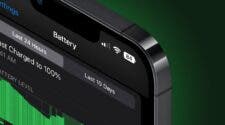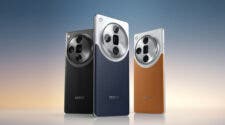Battery life remains a critical factor in the smartphone landscape. While manufacturers constantly tout advancements in charging speeds, the actual endurance of a device under real-world conditions is often a different story. TechNick, a prominent YouTuber, recently conducted a comprehensive battery drain test involving seven flagship smartphones to shed light on this crucial aspect.
Hardware Specifications and Battery Capacity
A key factor influencing battery life is the smartphone’s hardware. The contenders for this grueling test were the Samsung S24 Ultra, Huawei Pura 70 Ultra, iPhone 15 Pro Max, Xiaomi 14 Ultra, Vivo X100 Ultra, Vivo X100 Pro, and Honor Magic 6 Pro. Each device boasted impressive specifications, but the battery capacity, charging speed, and chipset efficiency varied significantly.
The Samsung S24 Ultra boasts a substantial 5000mAh battery and is powered by a 4nm Snapdragon 8 Gen 3 chipset. Its competitor, the Huawei Pura 70 Ultra, offers a slightly larger 5200mAh battery capacity and relies on an older 7nm Kirin chipset. Apple’s iPhone 15 Pro Max, known for its efficiency, houses a battery capacity of 4441mAh, even though Apple typically keeps it undisclosed> It’s also coupled with a cutting-edge 3nm Apple Bionic chipset.
Shifting focus to the Xiaomi camp, the Xiaomi 14 Ultra also comes equipped with a generous 5000mAh battery and harnesses the power of a 4nm Snapdragon processor. Vivo offers two contenders: the Vivo X100 Ultra and the Vivo X100 Pro. While the ultra version comes Snapdragon 8 Gen 3 chipset, the pro model utilizes 4nm MediaTek Dimensity 9300 chip. Both devices feature 5500mAh and 5400mAh batteries respectively from the manufacturer. Lastly, the Honor Magic 6 Pro also employs a 4nm Snapdragon 8 Gen 3 chipset. It also boasts a 5600mAh battery which is the largest battery in this group.
It’s important to note that while battery capacity is a crucial factor influencing battery life, it’s not the sole determinant. Chipset efficiency, software optimization, and screen technology also play significant roles in a smartphone’s overall endurance.
Before the test commenced, each smartphone was charged to 100% and set to maximum brightness and refresh rate. Temperature readings were also taken, with the Xiaomi 14 Ultra registering the highest at 32.1 degrees Celsius, while the S24 Ultra was the coolest at 24.4 degrees Celsius.
The Battle Begins
The smartphones were subjected to a series of demanding tasks including high-quality video playback, benchmark tests, video recording, gaming, and other resource-intensive apps. These conditions pushed the devices to their limits, revealing their true battery endurance capabilities.
The First Fallouts
The Xiaomi 14 Ultra was the first to surrender, lasting a disappointing 7 hours and 23 minutes. Following closely behind was the Vivo X100 Ultra at 8 hours and 46 minutes. Surprisingly, the Samsung S24 Ultra, despite its large battery, came in third with a runtime of 9 hours and 12 minutes. The iPhone 15 Pro Max, known for its efficiency, managed a slightly longer time of 9 hours and 15 minutes. The Vivo X100 Pro didn’t fare much better, lasting 10 hours and 17 minutes.
The Final Showdown

The battle intensified between the Huawei Pura 70 Ultra and the Honor Magic 6 Pro. Despite its smaller battery, the Huawei managed to outperform its competitor, lasting 11 hours and 3 minutes. It closely took the second place in this battery drain test even though it had the least efficient chipset amongst the other competing phones in this test. The Honor Magic 6 Pro followed closely behind at 11 hours and 5 minutes. This unexpected performance by the Huawei Pura 70 Ultra was a testament to its efficient power management, software optimizations and the Kirin chip technology.
The outcome of this test followed with a lot of mixed reactions from other viewers, especially for the Huawei Pura 70 Ultra. There are no two ways that Apple’s Bionic chip stands tall for its efficiency and power management capabilities. However, it failed to stand up to other devices in a real world battery drain test. As far as this particular battery drain test is concerned, Huawei’s Pura 70 Ultra pulled up the biggest surprise, even in temperature management as well.
Temperature Impact
Temperature is a critical factor influencing battery life and overall device performance. Excessive heat can lead to battery degradation and reduced efficiency. In this test, the Xiaomi 14 Ultra exhibited the highest temperature increase, reaching 40.6 degrees Celsius at the end of the test. The iPhone 15 Pro Max followed with 39.3 degrees Celsius, and the Samsung S24 Ultra at 36.4 degrees Celsius. The Vivo X100 Ultra and X100 Pro recorded similar temperatures of 34.8 and 34.7 degrees Celsius, respectively. Interestingly, the Huawei Pura 70 Ultra maintained the coolest temperature at 32.8 degrees Celsius, indicating efficient thermal management.
Implications and Conclusions
The results of this battery drain test underscore the complexity of determining smartphone battery life. While battery capacity is a crucial factor, it’s evident that chipset efficiency, software optimization, and thermal management play equally important roles. The Huawei Pura 70 Ultra’s performance is a testament to the potential of software optimization in maximizing battery life.
It’s essential to consider that real-world usage patterns vary significantly amongst users. Factors such as network connectivity, screen brightness, and app usage can impact battery life. Therefore, while this test provides valuable insights, it’s not a definitive measure of a smartphone’s overall battery performance.
Ultimately, the choice of a smartphone depends on individual priorities. Some users may prioritize battery life, while others may value other features such as camera quality, performance, or screen size. By understanding the factors that influence battery life, consumers can make more informed decisions when purchasing a new smartphone.
The smartphone industry continues to evolve rapidly, with new technologies and innovations emerging regularly. As battery technology advances and charging speeds increase, we can expect further improvements in smartphone battery life in the near future.





